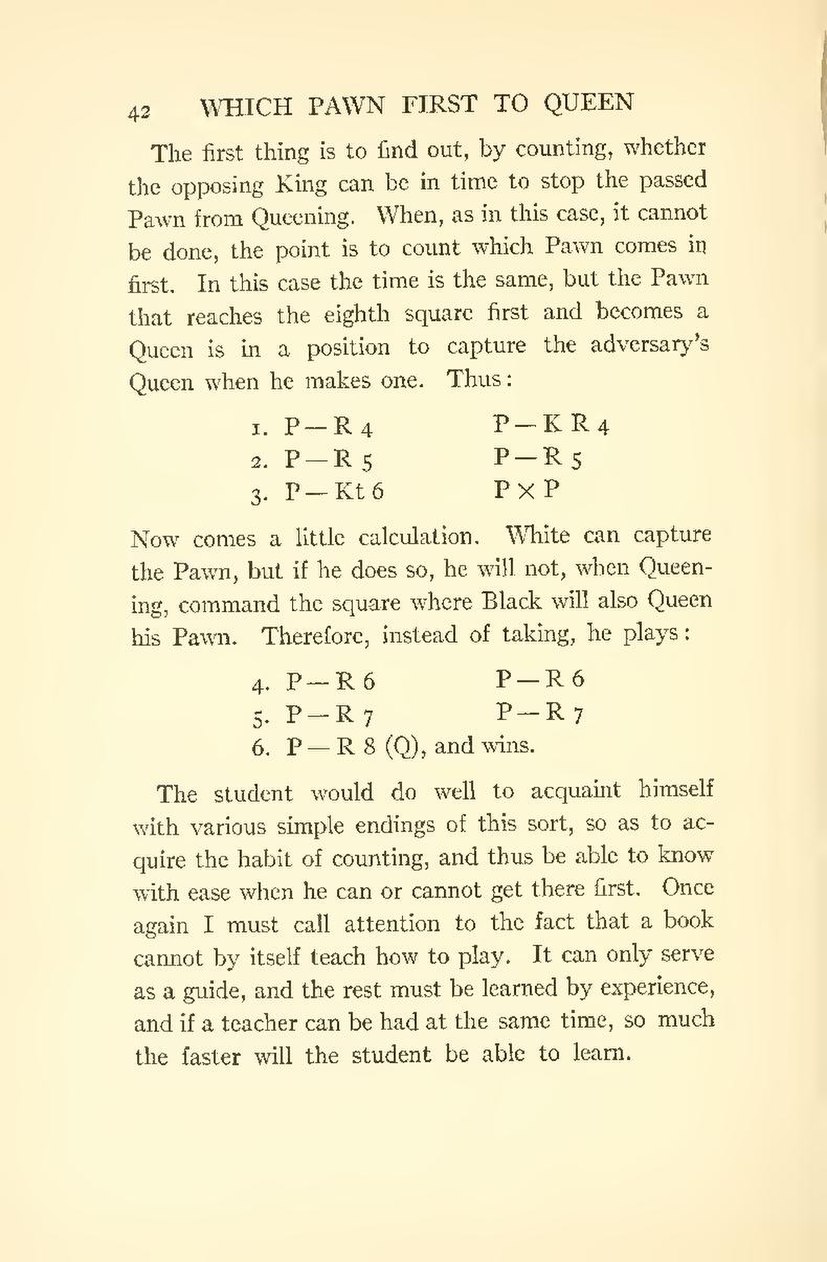The first thing is to find out, by counting, whether the opposing King can be in time to stop the passed Pawn from Queening. When, as in this case, it cannot be done, the point is to count which Pawn comes in first. In this case the time is the same, but the Pawn that reaches the eighth square first and becomes a Queen is in a position to capture the adversary’s Queen when he makes one. Thus:
1 P — R 4P— K R 4
2. P — R 5P — R 5
3. P — Kt 6P × P
Now comes a little calculation. White can capture the Pawn, but if he does so, he will not, when Queening, command the square where Black will also Queen his Pawn. Therefore, instead of taking, he plays:
4. P — R 6P — R 6
5. P — R 7P — R 7
6. P — R 8 (Q), and wins.
The student would do well to acquaint himself with various simple endings of this sort, so as to acquire the habit of counting, and thus be able to know with ease when he can or cannot get there first. Once again I must call attention to the fact that a book cannot by itself teach how to play. It can only serve as a guide, and the rest must be learned by experience, and if a teacher can be had at the same time, so much the faster will the student be able to learn.
